While the PlayStation 5 has many great features, one of the best is its DualSense controller. The latest iteration of Sony’s gamepad is not only comfortable to hold, it also packs tons of innovative features that boost immersion while playing. For a long time, the DualSense was the only PS5 controller worth recommending, but in 2024, PS5 users finally have a few more options, including the long-awaited DualSense Edge, PlayStation’s first-party pro controller. The DualSense Edge isn’t the only competitive controller worthy of being deemed one of the best PS5 controllers. PDP’s Victrix Pro BFG, an officially licensed controller with a similar focus, is a strong competitor that offers different features that may appeal to you.
Whether you’re looking for the best PS5 controller for general use (spoiler: It’s the DualSense) or options for fighting games, racing games, and streaming Netflix, there are a handful of great controllers we recommend using with the PS5 from reliable brands like Logitech, Razer, and Thrustmaster. And of course, we’re taking a look at the growing lineup of competitive controllers that give PS5 users more customization features.
For more recommendations, see the best Switch controllers and best Xbox controllers for 2024.
DualSense Wireless Controller
Specs:
- Battery: 6-12 hours
- Back buttons: No
- Adaptive triggers: Yes
- Haptic feedback: Yes
- Connectivity: Wireless (Bluetooth); Wired (USB-C)
- Supported platforms: PS5, PC
Pros:
- Comfortable
- Supports all PS5 features
- Comes bundled with the PS5
- Available in multiple colors
Cons:
- Lower than average battery life
- No pro-level features
The DualSense is comfortable to hold for long gaming sessions and has slightly longer sides with curved back triggers for a grip that gently supports your hands and index fingers. It’s a major improvement over the DualShock 4 in terms of ergonomics.
In addition to just being a great-feeling controller, the PS5 DualSense wireless controller features haptic feedback, which, in plain terms, is just a fancy vibration feature-, but it feels great when playing games that implement it well, such as Astro’s Playroom and Ratchet & Clank: Rift Apart. Adaptive triggers on the L2 and R2 buttons also provide realistic tension based on different situations, like the feeling of pulling back a bowstring or switching between different guns. The DualSense wireless controller has a built-in microphone for online play, and as with the DualShock 4, there’s a 3.5mm jack to directly plug in your PS5 headset for hearing other online players or just enjoying game audio.
The PS5 ships with one DualSense controller, of course, but if you’re picking up a second PS5 controller, it’s honestly not a bad idea to snag a second DualSense to switch to when the other is charging or for local multiplayer. The official PS5 DualSense charging station is worth picking up for this purpose as well. The DualSense comes in a variety of colors, including white, Midnight Black, Cosmic Red, Galactic Purple, Nova Pink, and Skylight Blue. The white and Midnight Black models retail for $70, while the other colors cost $75 each.
DualSense Edge
Victrix Pro BFG
Specs:
- Battery: 20 hours
- Adaptive triggers: No
- Haptic feedback: No
- Pro features: Modular thumbsticks, face buttons, and D-pad; programmable back buttons; adjustable trigger sensitivity.
- Connectivity: Wireless (Bluetooth); Wired (USB-C)
- Supported platforms: PS5, PS4, PC
Pros:
- Lots of customization options
- Comes with multiple modular pieces you can swap on the fly
- Supports PS5, PS4, and PC
Cons:
- Expensive
- Missing DualSense features like adaptive triggers, haptic feedback, and built-in mic
Though the DualSense Edge will be the best pick for those who already love the look, feel, and features found on the DualSense, PDP’s Victrix Pro BFG is an incredible option, too. The Victrix Pro BFG is a modular controller, which gives it more customization features than the DualSense Edge. You can quickly unscrew the faceplate that covers the controls and swap out accessories. By default, the BFG has offset sticks, like an Xbox controller but you can switch them to be aligned like the PS5’s Dualsense. It comes with two extra thumbsticks–one tall, one short–and three D-pads. Each D-pad is unique: a solid-body square D-pad to promote fast inputs, an eight-directional pad, and a traditional D-pad. You can also swap the right analog stick and face buttons for a fight-pad module. The six-button panel has a nice, clicky feel to it–much like a mouse.
In addition to the modular adjustments, there are four built-in back triggers that feel great, a rubberized grip, and clutch triggers. The R2 and L2 triggers can be locked at five different spots that shorten trigger pulls. The BFG stores up to three custom profiles, and the back triggers can be remapped on the fly without needing an app. The BFG can be used wirelessly with the included dongle (roughly 20 hours of battery life) or wired when connected to the braided USB-C cord. A switch on the top of the controller lets you swap between PS5, PS4, and PC profiles.
As impressive as it is, there are a few downsides to the BFG. Though it’s officially licensed, that doesn’t mean it has all of the features found in the DualSense. You’re missing out on adaptive triggers, haptic feedback, and the internal speaker. The lack of adaptive triggers and haptic feedback might be major losses for some, as many of PlayStation’s first-party games make great use of this tech.
Razer Raion
Specs:
- Battery: N/A
- Adaptive triggers: No
- Haptic feedback: No
- Pro features: No
- Connectivity: Wired (USB)
- Supported platforms: PS5 (PS4 games only), PS4, PC
Pros:
- The D-pad is perfect for fighting games
- Customizable six-button layout
- Analog stick functions can be mapped to D-pad
- Lightweight design
Cons:
- Only works with PS4 games on PS5
- No analog sticks
The Razer Raion is a wired PS4 controller that works with backward-compatible PS4 games on PS5. Currently, it’s still the best fight pad for PlayStation games, featuring a clicky eight-way D-pad with a six-button layout that resembles a fight stick. The buttons are slightly larger than usual, with Razer yellow switches for instantaneous inputs. You can even disable extra buttons you don’t need with a button lock function so you can avoid accidentally hitting the wrong inputs during tournaments. The Razer Raion is also light enough that it’s comfortable to hold in one hand and, with your other hand, tap the buttons piano-style.
You won’t need to switch to a fully-featured controller for things like character customization either, thanks to a switch that lets you map the left and right analog sticks to the D-pad. While the lack of analog sticks and triggers means you can’t use the Raion with most games on PS5, it’s an awesome pickup for fighting games like Mortal Kombat 11, Tekken 7, and Injustice 2.
Victrix Pro FS-12
Specs:
- Battery: N/A
- Adaptive triggers: N/A
- Haptic feedback: N/A
- Pro features: No
- Connectivity: USB
- Supported platforms: PS5, PS4, PC
Pros:
- Durable design
- Clicky, arcade-like buttons
- Easy to modify
- Integrated PS5 touchpad
Cons:
- Very expensive
- Heavier compared to our other picks
We couldn’t decide on just one fight stick option for PS5, so we picked two. Our first pick is the Victrix Pro FS-12, which is the new PS5-compatible iteration of our favorite PS4 fight stick. Like the previous model, The Victrix Pro FS-12 is made of sturdy aluminum but swaps out the standard joystick for an all-button layout and adds an integrated PS5 touchpad. The buttons are satisfyingly clicky and can be customized to suit your preferences. It also features customizable audio and lighting effects and an easy-access door to swap out components for modding.
Compared to our other pick, the Razer Kitsune–which is a sleeker and smaller device–the Victrix Pro FS’s is the better option for those who want an all-button stick with an arcade-like feel and lots of modding potential.
The Victrix Pro FS costs $400, so we recommend it mainly for hardcore fighting game fans–for a great mid-range option, check out the Razer Panthera Evo.
Razer Kitsune
Specs:
- Battery: N/A
- Adaptive triggers: N/A
- Haptic feedback: N/A
- Pro features: N/A
- Connectivity: Wired (USB)
- Supported platforms: PS5, PC
Pros:
- Super-low latency inputs
- Lightweight, portable design
- Customizble top plate
- Multiple Simultaneous Opposing Cardinal Direction (SOCD) cleaning modes
Cons:
- Not as robust as other fight sticks
- Limited modability
Our other pick for the best fighting game controller on PS5 is the Razer Kitsune. Like the Victrix Pro FS, the Kitsune is an all-button fight stick, meaning it has four separate directional buttons rather than a joystick. This allows for super-accurate button inputs that can make nailing special moves and combos easier than on other gamepads. It also includes four Simultaneous Opposing Cardinal Directions (SOCD) cleaning modes, which help keep your inputs accurate.
However, the Kitsune is a smaller device overall, weighing just under two pounds, and features a slimmer chassis compared to the Victrix Pro FS, making it the more portable of the two. The sleek design also extends to the controller’s hardware. The Kitsune uses low-profile buttons with short actuation height and linear optical switches, so button presses are fast with no input lag.
At $300, the Razer Kitsune is just a smidge more affordable than the Victrix Pro FS, so the ultimate decision comes down to your playstyle and input preferences. If you’re looking for a fight stick with the precision of an all-button layout and a streamlined design rather than one with a more arcade-like experience, then the Razer Kitsune is our recommendation.
Logitech G923
Specs:
- Components: Steering wheel with facebuttons, tiggers, and D-pad; floor pedal
- Connectivity: Wired (USB)
- Supported platforms: PS5, PS4, PC
Pros:
- Simple setup
- High quality materials
- TrueForce feedback
- Affordable compared to other racing wheels
Cons:
- Only some PS5 games support TrueForce feedback
- Simpler design and fewer features than more expensive models
Though there’s a wide range of options when it comes to PlayStation racing wheels, the Logitech G923 is a solid, budget-friendly option that’s easily available at Amazon and other stores (the Thrustmaster T300 RS GT is another popular pick). The Logitech G923 is often described as a great beginner’s racing wheel, and it’s compatible with racing games on PlayStation and PC with integrated game controls. It notably features the company’s TrueForce technology, which delivers high-definition force feedback for heightened racing realism. The downside is that the number of games compatible with TrueForce is still small: Gran Turismo 7, Grid, Assetto Corsa Competizione, iRacing, Gran Turismo Sport, Showrunner, and Dirt Rally 2.0.
It also has a programmable dual clutch, a 24-point selector, and progressive brake spring to help maximize your control of your vehicle. G Hub software also allows you to build multiple profiles, adjust your wheel sensitivity, and more. Though it’s not the most premium PS5 racing wheel on the market, it’s a reliable, relatively affordable, and easily obtainable wheel with a durable aluminum build made to last. That’s why it earns our recommendation here.
Thrustmaster T.Flight HOTAS 4
Specs:
- Connectivity: Wired (USB)
- Supported platforms: PS5, PS4, PC
Pros:
- Plug-and-play design
- Detachable throttle module
- Very affordable
Cons:
- More of a beginner-level option
Though an official PS5 flight stick hasn’t been released yet, one of the best PS4 options, the Thrustmaster T.Flight HOTAS 4, will work just fine with backwards compatible flight sims on PS5 like Star Wars Squadrons or Ace Combat 7: Skies Unknown. This officially licensed $90 flight stick is the more budget-friendly option and makes for a better entry-level flight stick. Though it doesn’t have a headset jack, the T.Flight HOTAS 4 is easy to set up and use with a dual-rudder system, detachable throttle, and adjustable resistance so you can customize how your flying feels.
The other main flight stick option for PS5 is the Hori HOTAS flight stick, which is much more expensive at $200 and adds an integrated headset jack, vibration motor, and throttle resistance, though its build quality doesn’t quite match the high price tag. Still, this is a great option as well (particularly if you’ve used flight sticks in the past) though harder to find in stock.
PlayStation Media Remote
Specs:
- Battery: Varies (requires two AA batteries)
- Connectivity: Bluetooth
Supported platforms: PS5
Pros:
- Great for navigating the PS5 menu
- Includes dedicated buttons for popular apps like YouTube, Netflix, Disney+, and Spotify
- Built-in IR transmitter for controller your TV
- Sleek and simple design
Cons:
- Batteries drain fast
- Only works with PS5.
PlayStation consoles have been streaming machines for several generations now, and the PS5 is a particularly great option for watching movies and TV as it’s capable of streaming content in 4K; the standard model can also play 4K Blu-ray discs. (Of course, you’ll need a 4K TV to take advantage of this as well.)
If you’re someone who likes to use the PS5 for media streaming, the PlayStation Media Remote is a no-brainer purchase that’ll make the process feel way easier. It comes with quick access buttons for Disney+, Netflix, Spotify, and YouTube along with pause, rewind, and fast forward buttons. With the media remote, you can power on the PS5 and navigate its menus, functioning just like the DualSense with the PS5 interface for a more intuitive feel. The PlayStation Media Remote is designed specifically for PS5 and costs $30.
PlayStation Portal
Specs:
- Screen: 8-in. LCD; up to 1080p resolutions and 60 fps
- Battery: 7-9 hours
- Adaptive triggers: Yes
- Haptic feedback: Yes
- Pro features: No
- Connectivity: Wifi
- Supported platforms: PS5
Pros:
- Uses the standard Dualsense controller layout
- Supports all Dualsense features
- Good screen
Cons:
- Battery life drops fast at full brightness and gameplay quality
- Gameplay quality depends on wifi connection
- Can’t stream cloud games
The PlayStation Portal is an all-in-one Remote Play device built specifically for streaming games from your PS5 console over wifi (cloud gaming is not supported, unfortunately). It’s essentially the standard PS5 Dualsense controller with an eight-inch LCD screen slotted in the middle, and while it doesn’t play games natively, it still provides an excellent Remote Play experience thanks to its familiar button layout and support for Dualsense functions like adaptive triggers and haptic feedback. The screen can reach 1080p resolution and 60fps, assuming your in-home wifi is strong enough.
The PlayStation Portal’s biggest drawback is the price. While $200 isn’t that much more expensive than some of the other devices on this list, there are more affordable third-party Remote Play devices out there. That said, the Portal is still the best option if you want your Remote Play experience to look and feel like playing on your PS5.
Backbone One (2nd Gen)
Specs:
- Battery: N/A (varies with phone)
- Adaptive triggers: No
- Haptic feedback: No
- Pro features: No
- Connectivity: Connects to phone via USB; Wifi or mobile data for gameplay
- Supported platforms: Controller: Android, iOS. Gameplay: PS5, PS4, PC, Xbox.
Pros:
- Supports a wide variety of smartphone models
- Can use it to play games from other consoles or streaming apps
- Can play games over wifi or mobile data (gameplay quality depends on connection strength)
Cons:
- No Dualsense features
- Button and thumbstick layout differs from standard PlayStation controllers.
Speaking of more affordable PlayStation Remote Play controllers, our favorite is the Backbone One mobile controller. The controller slots onto your iPhone or Android phone, turning it into a handheld gaming device that can stream games from your PS5 over wifi.
The Backbone One is available in multiple versions, including USB-C models that work on Android and iPhone 15 or newer, and a lightning port model that works on older iPhones. Both versions support charging passthrough, so you can keep your phone’s battery topped off while playing.
While the PlayStation version features the triangle, square, circle, and cross button labels for the face buttons, you can also use the controller to play games on other streaming services, including Xbox Game Pass and Steam (there are also Xbox versions with the A, B, X, Y button layouts instead). However, the thumbsticks are offset like on an Xbox or Nintendo Switch controller, rather than the parallel layout found on PlayStation pads. It Backbone One also lacks support for the Dualsense’s special features like adaptive triggers, haptic feedback, and controller audio. In practice, those changes don’t affect gameplay much, but it’s worth mentioning in case you prefer the parallel layout or want the Dualsense features, in which case the PS Portal is the better option.











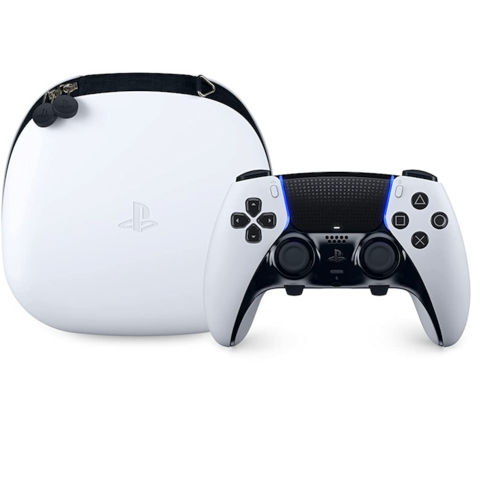

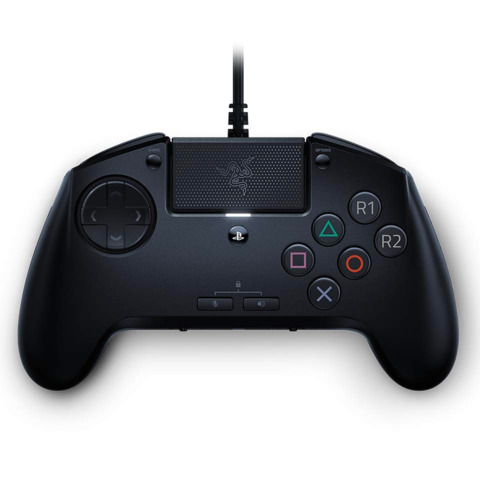


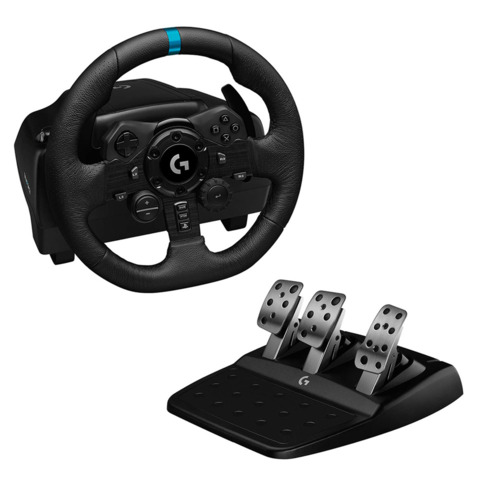
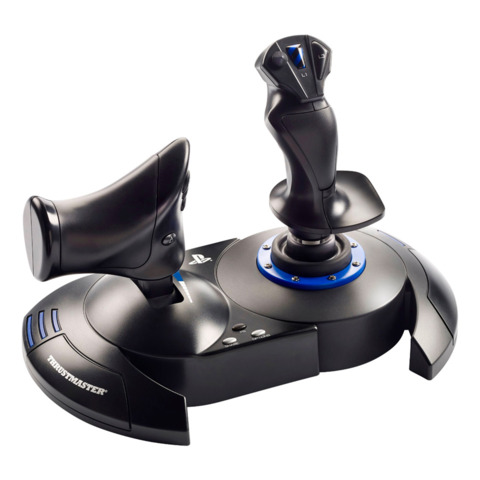
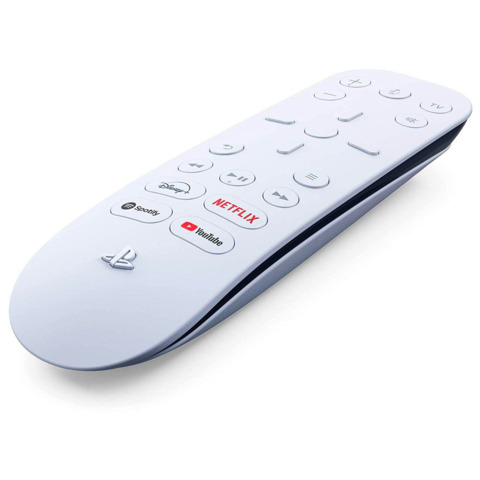














+ There are no comments
Add yours